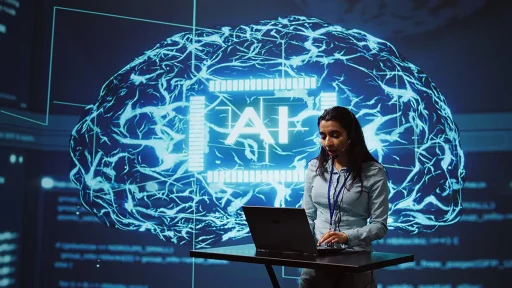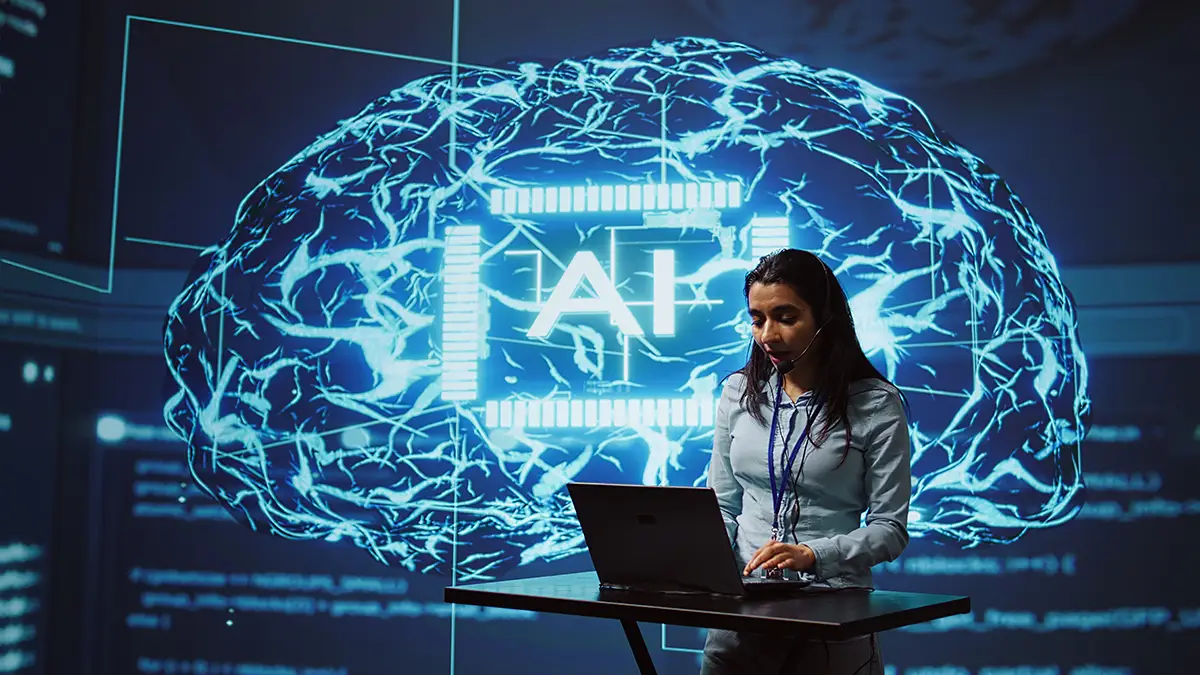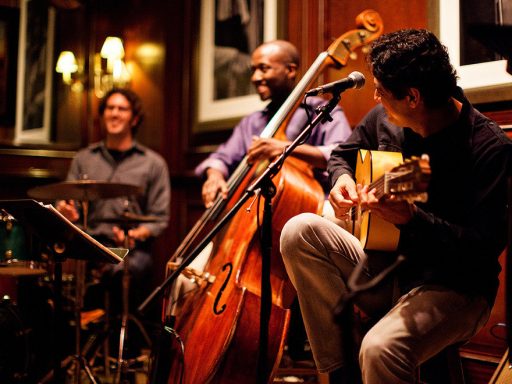In an era where technology is transforming nearly every aspect of our lives, the world of performances is no exception. From enhancing creativity to revolutionizing audience engagement, artificial intelligence (AI) is making its mark on the stage. While the integration of AI into performances offers numerous benefits, it also presents challenges that performers need to consider. This blog explores the pros and cons of using AI in performances, providing valuable insights for performers, artists, acts, and talents.
The Rise of AI in the Arts
AI is no longer a futuristic concept; it’s here, and it’s reshaping the arts. From music composition to dance choreography, AI applications are becoming increasingly prevalent. This section will explore how AI is being used in various artistic disciplines and its impact on the creative process.
AI’s ability to analyze vast datasets and recognize patterns is opening new doors for creativity. It can compose music, generate visual art, and even create scripts for theater productions. For performers, this means access to new tools that can inspire and enhance their work.
However, the rise of AI in the arts also raises questions about the role of human creativity. Can a machine truly understand and replicate the nuances of human emotion and expression? This ongoing debate highlights the need for a balanced approach to integrating AI into the arts.
Enhancing Creativity with AI
One of the most significant advantages of AI in performances is its potential to enhance creativity. AI algorithms can generate new ideas, provide unique perspectives, and push the boundaries of traditional artistic expression.
For example, AI can help musicians create innovative compositions by analyzing existing music and suggesting new melodies, harmonies, and rhythms. Similarly, visual artists can use AI to generate unique artworks based on specific parameters, resulting in pieces that are both novel and captivating.
While AI can be a powerful tool for fostering creativity, it’s essential for performers to use it as a complement to their creative instincts rather than a replacement. By doing so, they can leverage AI’s capabilities to elevate their artistry while maintaining their authentic voice.
Personalized Feedback for Performers
Another advantage of using AI in performances is the ability to receive personalized feedback. AI can analyze a performer’s techniques, identify areas for improvement, and provide tailored recommendations.
For instance, dancers can use AI-powered motion capture technology to analyze their movements and receive feedback on their form, timing, and precision. Similarly, actors can use AI-driven speech analysis tools to improve their enunciation, tone, and delivery.
By offering personalized feedback, AI can help performers refine their skills and achieve their full potential. However, it’s important to remember that AI feedback should be used as a supplementary tool alongside traditional methods of practice and critique.
Revolutionizing Marketing Efforts
AI is also transforming the way performers market themselves and their work. AI-driven marketing tools can analyze audience data, identify trends, and create targeted campaigns that resonate with specific demographics.
For example, AI can help performers optimize their social media presence by identifying the best times to post, the most engaging content, and the right hashtags to use. It can also assist in creating personalized email campaigns and advertisements that appeal to individual audience members.
By leveraging AI for marketing, performers can reach a wider audience, build a loyal fan base, and increase their visibility in the industry. However, it’s crucial to strike a balance between automated marketing and genuine, human interaction to maintain authenticity.
Improving Audience Engagement
Audience engagement is a critical aspect of any performance, and AI has the potential to take it to new heights. AI-powered tools can analyze audience reactions in real-time, providing performers with valuable insights into what resonates with their viewers.
For instance, AI can track facial expressions, body language, and vocal cues to gauge audience emotions during a performance. This data can then be used to adjust the performance in real-time, ensuring a more immersive and enjoyable experience for the audience.
Additionally, AI can facilitate interactive experiences, such as virtual reality performances and augmented reality installations, that allow audiences to engage with the art in new and exciting ways. By enhancing audience engagement, AI can create more memorable and impactful performances.
High Costs and Technical Difficulties
Despite its many advantages, the integration of AI into performances comes with significant challenges. One of the primary concerns is the high cost associated with implementing AI technology.
AI tools and software can be expensive, and not all performers or organizations have the budget to invest in them. Additionally, the technical expertise required to operate and maintain AI systems can be a barrier for some artists.
While the costs and technical difficulties may be daunting, performers can explore alternative options, such as collaborating with tech-savvy individuals or seeking funding and grants to support their AI initiatives.
Creative Limitations and Ethical Concerns
Another challenge of using AI in performances is the potential for creative limitations. While AI can generate new ideas and perspectives, it operates based on existing data and algorithms, which may not fully capture the nuances of human creativity.
Performers must be mindful of the limitations of AI and avoid relying too heavily on technology at the expense of their unique artistic expression. By striking a balance between AI and human creativity, performers can ensure that their work remains authentic and original.
In addition to creative limitations, the use of AI in the arts raises ethical concerns. Issues such as data privacy, intellectual property, and the potential for AI to replace human jobs are critical considerations that must be addressed.
Performers and organizations must engage in thoughtful discussions about the ethical implications of AI and develop guidelines to ensure its responsible use in the arts.
Maintaining Authenticity in the Age of AI
Incorporating AI into performances requires a delicate balance between leveraging technology and maintaining authenticity. Performers must stay true to their artistic vision while exploring new possibilities offered by AI.
One way to maintain authenticity is by using AI as a tool to enhance, rather than replace, human creativity. Performers can experiment with AI-generated ideas while infusing their unique style and perspective into the final product.
Additionally, performers should prioritize human connection and interaction in their work. While AI can provide valuable insights and feedback, the genuine relationships between artists and their audiences remain irreplaceable.
Collaborative Opportunities with AI
AI also opens up new opportunities for collaboration between performers and technologists. By working together, artists and AI developers can create innovative projects that push the boundaries of traditional performances.
For example, musicians can collaborate with AI developers to create interactive live performances where AI-generated visuals respond to the music in real-time. Similarly, dancers can partner with AI experts to develop choreography that incorporates AI-driven lighting and sound effects.
These collaborative efforts can result in groundbreaking performances that captivate audiences and showcase the potential of AI in the arts.
Future Trends in AI and Performances
The integration of AI into performances is still in its early stages, and the future holds exciting possibilities for further innovation. Emerging trends, such as the use of AI in virtual reality and augmented reality performances, are already beginning to take shape.
Additionally, advancements in AI technology, such as improved natural language processing and machine learning algorithms, will continue to expand the capabilities of AI in the arts.
Performers who stay informed about these trends and actively explore new technologies will be well-positioned to leverage AI’s full potential in their work.
Taking the First Steps with AI
For performers interested in incorporating AI into their work, the first step is to explore the available tools and resources. Many AI platforms offer free trials or demos, allowing artists to experiment with the technology before making a significant investment.
Additionally, performers can seek out workshops, online courses, and communities focused on AI in the arts. These resources can provide valuable knowledge and support for artists looking to integrate AI into their performances.
By taking these initial steps, performers can begin to unlock the creative potential of AI and discover new ways to enhance their artistry.
Case Studies of AI in Performances
Real-world examples of AI in performances can provide valuable insights and inspiration for artists. This section will highlight case studies of performers and organizations that have successfully integrated AI into their work.
For instance, the AI-driven music composition tool, AIVA, has been used by musicians to create original pieces that blend human creativity with machine-generated ideas. Similarly, the dance company Wayne McGregor has experimented with AI-generated choreography, resulting in innovative and visually stunning performances.
These case studies demonstrate the potential of AI to transform the arts and provide practical inspiration for performers looking to explore AI in their work.
Conclusion
The integration of AI into performances offers both exciting opportunities and significant challenges. From enhancing creativity and providing personalized feedback to revolutionizing marketing efforts and improving audience engagement, AI has the potential to elevate the art of performance in new and meaningful ways.
However, performers must carefully consider the costs, technical difficulties, creative limitations, and ethical concerns associated with AI. By striking a balance between leveraging technology and maintaining authenticity, performers can harness the power of AI to enhance their artistry and connect with their audiences.
For those ready to take the plunge into the world of AI, the key is to start small, explore available resources, and stay informed about emerging trends. With thoughtful integration, AI can be a powerful tool that helps performers elevate their craft and create unforgettable experiences for their audiences.







